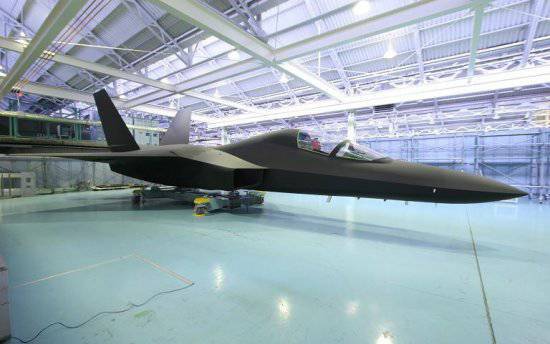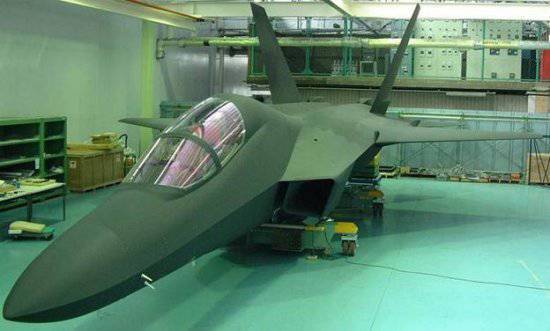Tokyo decided to create its own generation 5 fighter
RЇRїRѕRЅSЃRєRѕRμ RїSЂR ° RІRoS,RμR "SЊSЃS,RІRѕ SЂRμS € Röhr" of the PS SѓRјRμRЅSЊS RoS,SЊ € P · ° F RІRoSЃRoRјRѕSЃS,SЊ RѕS, RЎRORђ PI RѕR ± P "P ° SЃS,Ro RІRѕRμRЅRЅRѕR№ aviation. R '° RЅR SЃS,RѕSЏS ‰ RμRμ RІSЂRμRјSЏ RїSЂR RєS,RoS ‡ ° F ± RμSЃRєRo RІSЃRμ RѕRμRІS <Rμ SЃR ° RјRѕR "RμS,S <RЇRїRѕRЅRoRo ° F RјRμSЂRoRєR ° RЅSЃRєRѕRіRѕ RїSЂRѕRoR · RІRѕRґSЃS,RІR ° Röhr" Ryo SЃRѕR ° ± SЂR РЅС ‹РІ РЇРїРѕРЅРёРё СЃ неР± РѕР» СЊС € РёРјРё СЏРїРѕРЅСЃРєРёРјРё РґРѕРїРѕР »РЅРµРЅРёСЏРјРё.
Tokyo was unable to persuade Washington to sell the X-NUMX fighter of the F-5 generation to it, but the F-22 is not ready yet, besides its characteristics are doubtful, the constant increase in its value also does not add to its popularity.
Japanese military aircraft were frozen after defeat in World War II. The transport aircraft of Japan, including helicopters, was also predominantly designed in the USA and built by Japanese companies. Buying military equipment, Tokyo necessarily required to create joint ventures that were engaged in the refinement of the "source" in accordance with the requirements of the Japanese military. With such a scheme, the final cost of purchased military equipment is higher than if it was purchased in the United States in the finished form, however, thanks to joint ventures, the Japanese government supports its own economy: this provides additional jobs, a steady flow of investment into the economy, financing of enterprises.
In 2004, Tokyo decided to build its 5 generation ATD-X Shinshin fighter, built using stealth technology. The project received the status of a technology demonstrator, and it was not planned to put the aircraft into operation initially. Just in this way, Japan wanted to prove its ability to produce high-tech military equipment. But after the failure of negotiations on the purchase of American "Predators" Tokyo was thinking about building a full-fledged fighter, which can be adopted.
What is known about the project
- The aircraft is being developed by Mitsubishi. In April, 2010, the government announced a tender for the supply of jet engines for ATD-X. Whether the competition is completed, and who was named the winner, is still unknown. According to the requirements, jet engines must have a kilo-newton 44-89 killing gear. The power plants are planned to be refined to install on them a system of all-view thrust vector control, which, by the way, is planned to be implemented not with the help of a moving nozzle, but with the help of three wide plates. This technology was first implemented in the United States in 1990 on a Rockwell X-31 aircraft. The Japanese company showed the greatest interest in the General Electric F404, Snecma M88-2 and Volvo Aero RM12 engines. Such power plants are used on the Boeing F / A-18 Super Hornet, Dassualt Rafale and Saab JAS 39 Gripen fighter jets, respectively. Imported engines will be used specifically for testing prototypes, while serial fighters will receive XF5-1 engines developed by Japanese company Ishikawajima-Harima Heavy Industries.
- It is planned to use stealth technology, including a scattering geometric shape, radio absorbing materials and the widespread use of composites.
- Japanese designers want to introduce fiber-optic remote control technology with multiple duplication of data exchange channels. Such a solution will allow maintaining control of the aircraft in the event of damage to one of the subsystems, as well as in the conditions of electronic suppression.
- It is possible that ATD-X plans to implement the technology of self-healing flight control (SRFCC, Self Repairing Flight Control Capability). This means that the on-board computer of the aircraft will automatically detect the damage received and reconfigure the operation of the flight control system by including backup operational subsystems in the chain. It is planned that the computer will also determine the degree of damage to various structural elements of the aircraft - ailerons, elevators, rudders, wing surfaces - and adjust the operation of the remaining entire elements in order to almost completely restore the fighter’s controllability. However, as the Japanese designers can do this, it is not known.
- It is planned to put a multi-mode radar with an active phased array antenna of a wide spectrum, electronic countermeasures, electronic warfare equipment, as well as a unified information exchange system. There are rumors of a microwave weapons.
There is evidence that the first test of the Japanese fighter will be in 2014 year. If the Japanese have time to create a prototype by this date, then adoption should be expected no earlier than 2018-2020.
In addition to not wanting the US to sell Tokyo "Predator", there are other reasons for creating a Japanese 5 fighter generation. This is an increase in China’s power, including testing a prototype of an 5 generation aircraft, and South Korea’s development of a lightweight KF-X generation 4 + fighter with Indonesia.


Information